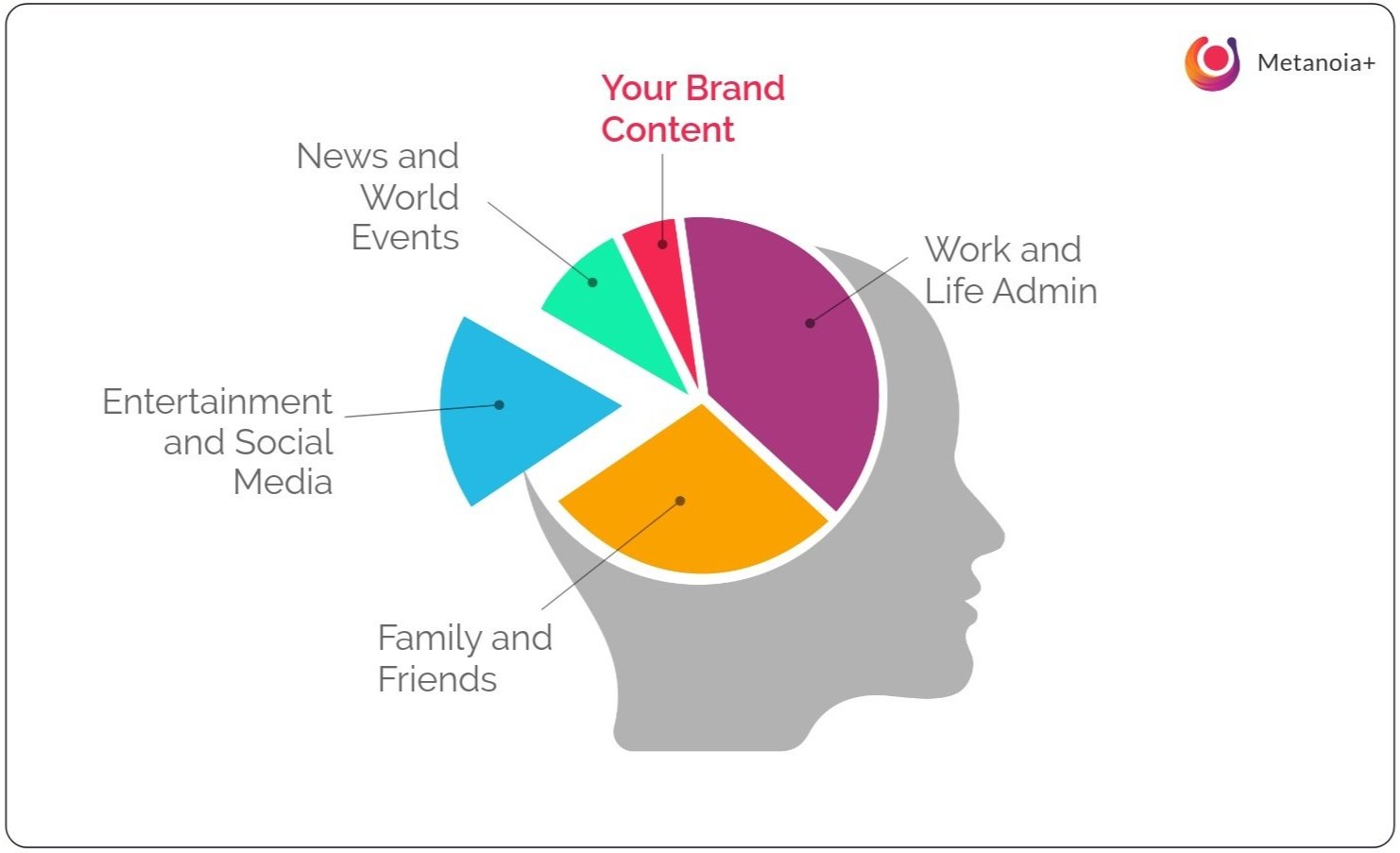The 8-Second Attention Threshold
The Neurological Reality Your Marketing Team Must Confront
Your campaigns are competing against a fundamental neurological constraint that no creative brief can overcome.
Research from Microsoft's Consumer Insights team has confirmed what many marketers instinctively feel: consumer attention spans have contracted to approximately 8 seconds, down from 12 seconds in 2000. This isn't merely an engagement challenge—it's a neurological filtering mechanism that determines whether your brand message even enters conscious awareness.
While these categories tell us what consumers discuss, the more valuable insights lie in understanding why these conversations matter to them.
The Brain Science That's Sabotaging Your Campaigns
As marketing leaders, understanding these neurological mechanisms provides a competitive advantage.
Your Content Faces Aggressive Neural Filtering
Neuroimaging research reveals that the prefrontal cortex now implements ruthless information triage when faced with stimulus overload. Your carefully crafted messaging is being neurologically discarded before semantic processing even begins—unless it triggers immediate relevance signals.
Your Consumers Are Neurochemically Conditioned
Functional MRI studies from Stanford University demonstrate how digital platforms have conditioned consumer brains for dopaminergic rewards through variable-ratio reinforcement schedules. This creates heightened reward thresholds that standard marketing content simply cannot activate, resulting in immediate disengagement.
The Consumer Brain Has Physically Adapted
Structural changes in attention-related neural pathways (particularly the anterior cingulate cortex) mean your audience physically lacks the neurological architecture needed to process traditional marketing approaches.
This isn't about preference—it's about neurophysiological capability.
The 8-Second Imperative: Your New Campaign Parameter
The critical 8-second window represents the "cognitive commitment threshold"—the period during which the brain decides whether to allocate limited processing resources to your message. MIT's Attention and Perception Laboratory research confirms that failing this initial evaluation means your content receives minimal cortical engagement regardless of quality or relevance. Your million-dollar campaign is effectively invisible if it doesn't secure cognitive commitment within this window.
Marketing-Neurology Misalignment: Your Blind Spot
Current marketing approaches remain misaligned with established neurological parameters.
Your Content Exceeds Processing Capacity
The average brand video requires 12-15 seconds before delivering core messaging—exceeding the 8-second threshold by 50-87%. This creates a fundamental processing-capacity mismatch that guarantees message deterioration.
Your Campaigns Ignore Cognitive Load Limitations
Comprehensive campaign messaging frequently exceeds working memory capacity (7±2 items), triggering cognitive overload and attentional disengagement—essentially making your detailed value propositions counterproductive.
Your Competition Isn't Other Brands—It's Neural Bandwidth
While you're strategizing against category competitors, the real battle is for neural bandwidth in an increasingly limited attentional economy. Most marketing teams optimize for the wrong competitive landscape.
The Marketing Implications You Can't Ignore
These neurological constraints translate directly to marketing KPIs:
Conversion Rate Deterioration
Eye-tracking studies by Nielsen Norman Group demonstrate that attentional fragmentation reduces call-to-action processing by 38%—directly impacting conversion rates regardless of creative quality.
Diminishing Brand Recall
Neuropsychological research confirms that attentional constraints impair hippocampal activation essential for brand memory consolidation, reducing unaided recall by 27% compared to pre-digital era benchmarks.
Wasted Media Spend
Media investments calibrated to outdated attentional parameters result in an estimated 42% exposure wastage, with neurological filtering preventing message processing despite technical impression delivery.
Neuroadaptive Marketing: Your Competitive Advantage
Forward-thinking marketing teams are implementing neurologically-optimized approaches
Front-Load Brand Value Signals
Restructure all assets to deliver core value propositions within the first 5 seconds, allowing 3 seconds for cognitive processing before the attentional threshold expires.
Implement Cognitive Load Budgeting
Establish maximum information density parameters for all marketing assets, maintaining stimuli within working memory capacity to prevent attentional disengagement.
Activate Emotional Processing Networks
Prioritize content demonstrated to stimulate the ventromedial prefrontal cortex and amygdala within the first 3 seconds, leveraging emotional processing pathways that operate below the threshold of conscious awareness.
Synchronize with Attentional Rhythms
Structure content presentation to align with established theta wave oscillation patterns (4-7 Hz), creating neurological resonance that extends engagement beyond standard thresholds.
Implement Neuroretargeting Sequences
Develop progressive exposure systems that account for attention restoration intervals, creating cumulative message impact without triggering attentional defense mechanisms.
Implications for Marketing Leadership
The 8-second threshold represents a strategic inflection point for marketing organizations:
-
Current creative processes typically produce assets optimized for 15-30 second engagement windows. These development workflows require fundamental reconstruction around neurological constraints.
-
Traditional engagement metrics fail to account for neurological filtering effects. Teams must implement neurocognitive response indicators that measure actual message processing, not just technical exposure.
-
Media plans built on outdated attentional assumptions represent significant resource misallocation. Neurologically-informed frequency and sequencing models are essential for effectiveness.
-
Most agency partners remain committed to creative approaches that neuroscience has rendered obsolete. Partnership selection and briefing processes must evolve to prioritize neurological effectiveness over creative tradition.
Marketing effectiveness now depends on precision-engineered alignment with cognitive processing parameters, not creative brilliance alone. Your campaigns aren't competing for consumer preference—they're competing for neurological processing capacity. Teams that adapt to this neurological reality will capture a disproportionate share of the increasingly limited attentional economy, while others will continue creating sophisticated content that never reaches conscious awareness.
As marketing leaders, your strategic imperative is clear: restructure your approach around the neurological reality of the 8-second threshold or accept the inevitability of increasing campaign ineffectiveness despite escalating marketing investment.







